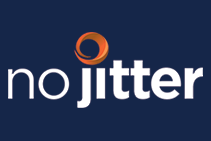Communications platform as a service (CPaaS) has become the go-to for driving the transformation of business communications. Developers can use APIs and SDKs to embed voice, messaging, and other communications capabilities into existing customer and partner applications. A challenge that enterprises face is that traditional CPaaS technologies focus on transporting messages and calls. But they don’t enable intelligent end-to-end journeys that encompass natural language conversations, business system integrations, and automated fulfilment of customer requests.
Here’s where Enterprise CPaaS offers an advantage.
Enterprise CPaaS: Automate customer journeys end-to-end using a single platform and low-code toolset
Enterprise CPaaS offers a central platform for building and configuring communications-enabled applications. The platform acts as the glue between an enterprise’s back-end systems and communications channels, providing a single point of orchestration that lays the foundation for delivering a connected, holistic customer experience.
While Enterprise CPaaS offers many features and functionalities for developers, IT managers, and other users, three key capabilities enable enterprises to design intelligent end-to-end journeys that include multiple systems and channels. They are:
- Integrations. The platform enables enterprises to connect customer interactions with disparate business and partner systems. Inbound integrations enable events from business systems to trigger communications, whereas outbound integrations permit data lookups, updates, and activating fulfilment actions.
- Bi-directional communication. Enterprise CPaaS supports bi-directional communication, enabling two-way interactions using APIs, webhooks, message queues, files, and other integration technologies.
- Visual flow builder. The centerpiece of an Enterprise CPaaS platform is its low-code flow builder that allows users to automate and progressively redefine customer journeys as flows. A large variety of pre-built functionality, logic, and configurations appear as visual building blocks that you can quickly drag and drop into flows. These include AI and natural language processing (NLP) capabilities, channels, database lookups, customer preferences, communications rules, and much more.
Pharmacy Refills for Leading U.S. Retailer: A Use Case
Here’s one example of an end-to-end customer journey deployed on our
Enterprise CPaaS Platform for a leading U.S. retailer as part of their pharmacy division. The objective of the use case was to create an end-to-end journey reminding its customers when they are due for a prescription refill, confirming the customer’s order, and notifying them when the order is ready. The platform executed the process in six steps.
- The trigger - the journey starts when the retailer’s scheduling system raises an event that a prescription is due for a refill.
- Customer experience engineering - to ensure a positive experience, customer preferences are checked to determine the next steps for initiating contact, including channel preference, social hour, time zone, consent, etc.
- Customer contact - depending on the parameters above, the pharmacy contacts the customer via their preferred channel (e.g., voice call). The customer confirms they want to refill their prescription and then confirms their age.
- Fulfill order – the order is passed to the retailer’s order management system and waits for a confirmation that the order is ready to be picked up by the customer.
- Trigger order confirmation - the flow compares the store timings with the current time to decide if there is enough time to pick up the prescription on that day. If not, the notification will be sent the next day.
- Notifying the customer - The customer is notified via their preferred messaging channel (e.g., SMS) that their prescription is ready, and they can confirm with a simple reply that they will pick up their prescription.
Key considerations for creating great end-to-end journeys
When using an Enterprise CPaaS platform to automate end-to-end customer journeys, these are three considerations you must think about to ensure a great experience for customers:
- Identify the moments that matter. It can be difficult to know where to start and what journeys can be designed that will have an immediate positive impact. We recommend that you try to identify the moments that matter, these are points of frustration, opportunity, or expectation where you can deliver solutions that proactively resolve or capitalize on these instances to increase customer satisfaction.
- Maintaining context. Repeating yourself is a frustration that we all share. For example, a customer may get in contact over Apple Messages for Business to raise an inquiry about the status of an application. They go through the self-serve qualification process that verifies their identity, type of query, application reference, etc. The journey escalates them to a call with a customer service agent, and the first thing the customer is asked is “How can I help you today?”. That is an unnecessary hindrance to delivering a great customer experience, so when designing end-to-end journeys, think about how you can use the integration and flow capabilities of Enterprise CPaaS to expose context to other systems and channels.
- Customer service escalation. What happens if the journey fails to deliver the desired outcome, or a customer wants more information? You need to consider how you want to escalate interactions to customer support agents when required and what is the process for doing that. Do you want to simply provide them with a phone number to call or do you want to seamlessly connect an agent into the conversation? If you choose the latter option, you need to ensure that you connect the customer to the right agent who is empowered to deliver a positive outcome for that customer.
For more information about the features and functionality of Enterprise CPaaS that will help you build and automate intelligent customer journeys end-to-end, download our
Enterprise CPaaS Buyer’s Guide, here.









